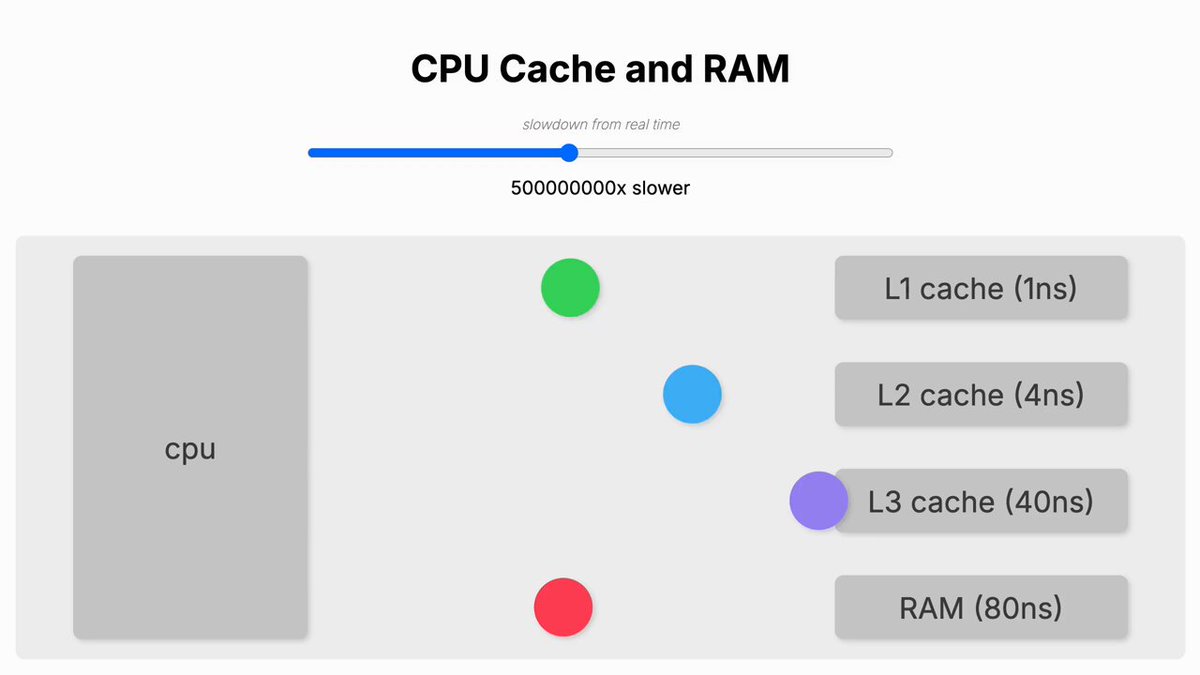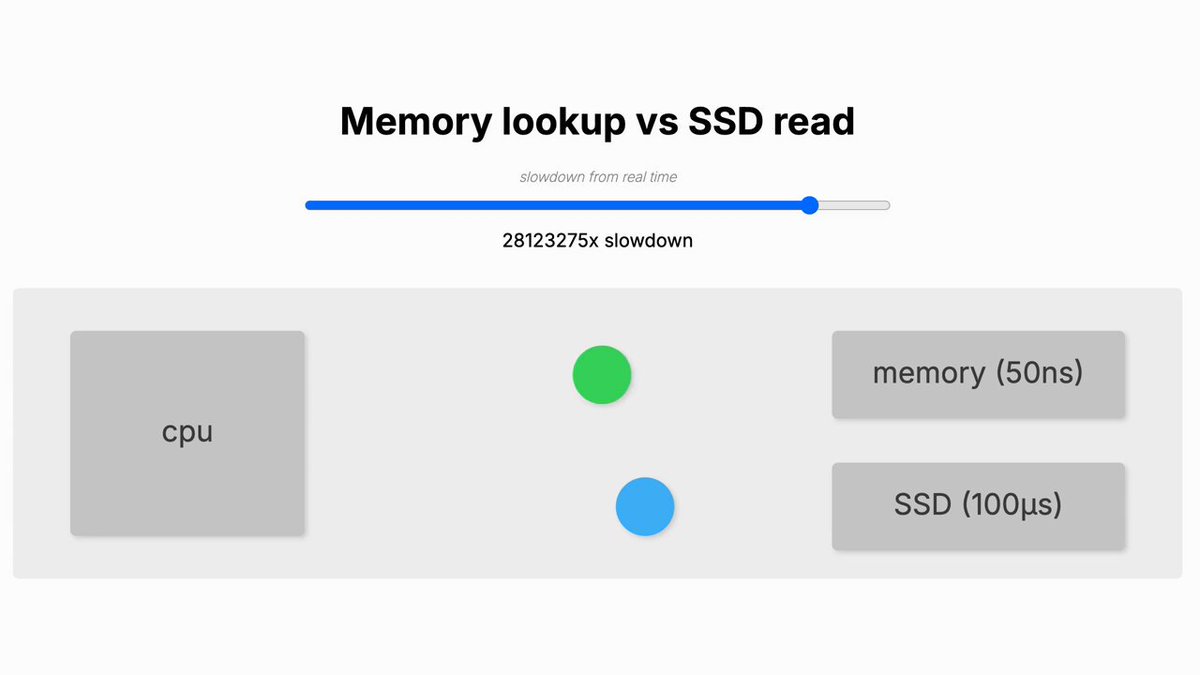Ben Dicken on X: “You asked for it, so here it is. Visualizing CPU cache speeds relative to RAM. Cache optimization is important too!”
Description

CPU Cache and RAM performance slowed down many magnitudes for better comparison
[WaybackSave/Archive] Ben Dicken on X: “You asked for it, so here it is. Visualizing CPU cache speeds relative to RAM. Cache optimization is important too!”
Cover .jpg: [WaybackSave/Archive] Bo3x-4alnGEqj-1I.jpg (1200×675).
The graph was made using [Wayback/Archive] GitHub – d3/d3: Bring data to life with SVG, Canvas and HTML. :bar_chart::chart_with_upwards_trend::tada:.
The underlying data is from [Wayback/Archive] Memory Performance in a Nutshell.
It was kind of a follow-up on a similar animation for Memory lookup versus SSD read speed (links at the end of this blog post)
Videos via [WaybackSave/Archive] Tweet JSON:
- [WaybackSave/Archive] video.twimg.com/ext_tw_video/1847309604436516864/pu/vid/avc1/480×270/6GArYwXZ6QFi8yuM.mp4
- [WaybackSave/Archive] video.twimg.com/ext_tw_video/1847309604436516864/pu/vid/avc1/640×360/MIu0gkdnCUXeBgZT.mp4
- [WaybackSave/Archive] video.twimg.com/ext_tw_video/1847309604436516864/pu/vid/avc1/1280×720/xc57wNeBOBjJ9RWc.mp4
I thought the source would have been [Wayback/Archive] Peter Norvich: Teach Yourself Programming in Ten Years – approximate timing for various operations on a typical PC.
But others suggested Brendan Gregg, so here are some materials from him:
- [Wayback/Archive] https://www.brendangregg.com/Slides/QCon2015_Broken_Performance_Tools.pdf
- [Wayback/Archive] CPU Utilization is Wrong via [Wayback/Archive] Gregg: CPU Utilization is Wrong [LWN.net]
Brendan Gregg asserts that CPU utilization is the wrong metric to be looking at when tuning a system. Much of the time when the CPU appears to be busy, it’s actually just waiting for memory. “The key metric here is instructions per cycle (insns per cycle: IPC), which shows on average how many instructions we were completed for each CPU clock cycle. The higher, the better (a simplification). The above example of 0.78 sounds not bad (78% busy?) until you realize that this processor’s top speed is an IPC of 4.0. This is also known as 4-wide, referring to the instruction fetch/decode path. Which means, the CPU can retire (complete) four instructions with every clock cycle. So an IPC of 0.78 on a 4-wide system, means the CPUs are running at 19.5% their top speed. The new Intel Skylake processors are 5-wide.”
Related blog posts:
- Pricetracker/-watch/-drop alters/-history charts for Newegg.com, Amazon.com, Best Buy, BackCountry.com, Zzounds.com
- Insightful : SE-Radio Episode 225 Brendan Gregg on Systems Performance by…
- Latency Numbers every Programmer and Architect should know
- Scaling, automatically and manually – The Isoblog.
- a perf cheat sheet from @brendangregg’s fantastic web page; you can print it as PDF

Memory lookup vs SSD read
Related tweet:
[WaybackSave/Archive] Ben Dicken on X: “Did you know that a random SSD read is multiple orders of magnitude slower than a random memory read? I mad




